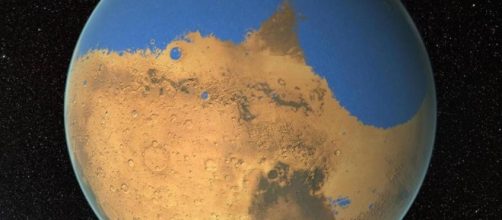The Mars´s atmospheric and Volatile Evolution (MAVEN) is a NASA mission which is intended to study the atmosphere of the red planet. It was launched on November 18, 2013 and reached the orbit of Mars on September 21, 2014. The principal goal of the mission is to study the upper part of the Mar´s atmosphere and record the interaction of the solar wind with the molecules present there. Scientists want to understand the reasons behind the thin atmosphere of the red planet.
Mars atmosphere
In the present, it´s known from previous missions to Mars that its atmosphere has evolved from a thicker to a thinner one.
It has been found evidence that the planet´s surface once contained liquid water. Scientists intent to understand what causes led to the disappearance of water and how the thick atmosphere got depleted. It´s suspected that the solar wind may have contributed to the stripping of most of the atmosphere, turning a once habitable planet into an inhospitable and dry one.
Atmospheric contents
The main components of the red planet´s atmosphere consist of 95% CO2, 1.92% argon and 1.88% nitrogen; the rest consists of traces of water and oxygen. The atmosphere contains particles of dust 1.5 micrometers in diameter, turning it into a dusty one. The red hue is due to iron oxide suspended in the ambient.
Methane has been detected in the atmosphere.
It´s believed to have originated in plumes from volcanic activity; however, this gas may also have other sources, including meteorite and comet impacts, or stem from methanogen microbes. Methane could also have been formed from serpentinization, involving CO2, HO2 and the mineral olivine.
Spacecraft mission
On an elliptical orbit around Mars MAVEN is able to pass through Mars upper atmosphere once on every orbit.
This allows the Spacecraft to sample the gas and ion contents. At more than 6,000 km (3728 miles) from the planet´s surface, it can image the entire planet. MAVEN is lower down the atmosphere in campaigns dubbed, ¨Deep dip.¨ during each campaign, the spacecraft will conduct atmospheric measurements 125 km (77 miles) lower in the atmosphere.
MAVE carries scientific payload to perform the varied measurements on the Mars ‘atmosphere. Understanding the processes that led to the loss of the Martian atmosphere will give them a deeper understanding into the ancient and evolving mars ‘atmosphere and its past and present habitability.The understanding of these processess may help understand the future of our own planet.

